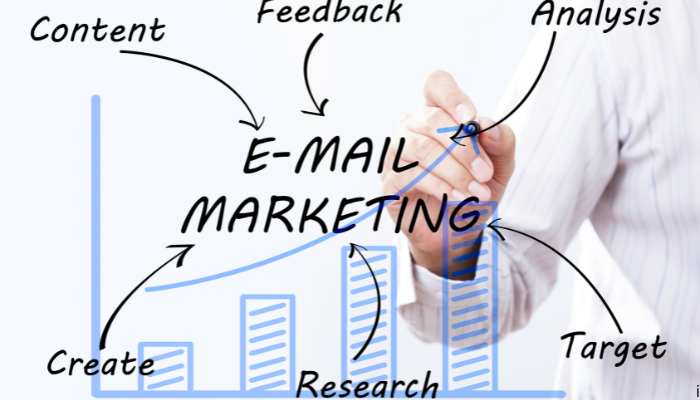
1. Build a Quality Email List
The foundation of any successful email marketing campaign is a solid, permission-based email list. Instead of purchasing email lists, focus on organically growing your audience. Here’s how:
- Use opt-in forms on your website, blog, and social media to encourage visitors to subscribe to your emails.
- Offer valuable incentives, such as free resources, exclusive deals, or discounts, to entice potential subscribers.
- Ensure compliance with GDPR and other email regulations by obtaining consent before sending marketing emails.
2. Segment Your Audience
One-size-fits-all emails rarely drive engagement. Segmenting your email list based on criteria like demographics, purchase history, or user behavior allows you to send personalized messages. By tailoring content to specific groups, you can:
- Increase open rates and click-through rates (CTR)
- Improve conversion rates by sending relevant offers
- Strengthen customer loyalty through targeted content
3. Craft Compelling Subject Lines
Your subject line is the first thing recipients see, and it can make or break your email campaign. Here’s how to create subject lines that encourage opens:
- Keep it short and direct: Aim for 6–10 words and 30–50 characters.
- Create urgency: Use phrases like "limited-time offer" or "last chance" to spark action.
- Be specific: Highlight the value or benefit readers will get from opening the email.
- Avoid spammy language: Steer clear of excessive punctuation, all caps, and phrases like “free money.”
4. Personalize Your Emails
Personalization goes beyond using the recipient’s name. To truly engage your audience:
- Send tailored offers based on past purchases or interactions.
- Use dynamic content to display different messages to different segments.
- Reference relevant information, such as location, preferences, or browsing history, to make the email feel customized.
5. Design for Mobile Users
Over half of all emails are opened on mobile devices, so it’s essential to ensure your emails are mobile-friendly. Best practices include:
- Using responsive email templates that adjust to different screen sizes
- Keeping text concise and easy to read on small screens
- Ensuring buttons and links are easily clickable
- Optimizing images for quick loading on mobile networks
6. Provide Clear Calls-to-Action (CTAs)
Every email you send should have a clear purpose, whether it’s driving traffic to your website, promoting a product, or encouraging sign-ups. Make your CTAs:
- Action-oriented: Use verbs like "Shop Now," "Sign Up Today," or "Learn More."
- Visually prominent: Place your CTA buttons in strategic, easy-to-click locations.
- Easy to understand: Let your readers know exactly what they’ll get by clicking.
7. Test and Optimize
Continuous testing and optimization are crucial for improving your email campaigns over time. Conduct A/B tests to:
- Compare different subject lines, CTAs, and email designs
- Test the optimal time and day to send emails
- Evaluate which content resonates best with your audience
Monitor key performance metrics like open rates, click-through rates, and conversion rates to identify areas of improvement.
8. Maintain a Consistent Schedule
Sending emails sporadically can cause your audience to forget about your brand, while sending too frequently may lead to unsubscribes. Find a balance by:
- Establishing a regular cadence: Whether it’s weekly, bi-weekly, or monthly, consistency is key.
- Keeping content valuable and relevant: Avoid sending emails just for the sake of it. Every email should provide some benefit to the recipient.
9. Include an Easy Unsubscribe Option
Allowing users to unsubscribe easily not only complies with regulations but also helps you maintain a healthy email list. Make sure the unsubscribe button is clearly visible, and use feedback options to understand why subscribers are leaving.
10. Track Performance and Analytics
Finally, make data-driven decisions by regularly tracking the performance of your campaigns. Most email marketing platforms provide detailed analytics on metrics such as:
- Open rates
- Click-through rates
- Conversion rates
- Bounce rates and unsubscribes
